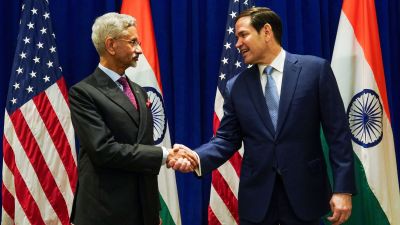Defence & security affairs
Air commodore Jasjit Singh, Editorial Advisor (Defence and Strategic affairs) to The Indian Express, answers your questions on strategic iss...

Air commodore Jasjit Singh, Editorial Advisor (Defence and Strategic affairs) to The Indian Express, answers your questions on strategic issues. Singh, a former director of the Institute of Defence Studies and Analysis, can be reached at jasjitsingh@expressindia.com.
I believe that the Special Judge dealing with the Bofors case, in his recent judgement on framing of charges, has concluded about the ‘‘quality’’ of the Bofors gun purchased in mid-1980s that the ‘‘theory of shoot and scoot is fictitious’’. Is the ‘‘shoot and scoot’’ theory indeed fictitious? If the quality of the gun is under doubt, what are the implications for our defence?
I do not know what the court has actually ruled. But it would indeed be surprising if the court has raised doubts about the quality of the 155mm Bofors gun, especially after its performance during the Kargil War. But perhaps the more important point is that of ‘‘shoot and scoot’’ being fictitious, if that is the term used. The United States had developed the ANTPQ radars for artillery gunfire locating purposes in the 1970s and such radars were part of the inventory of the United States and some of its allies by end-1970s. When Pakistan agreed to be the frontline state to Soviet intervention in Afghanistan, it negotiated an arms package after 1981 which included F-16 and other weapons and equipment. The transfer of ANTPQ artillery fire locating radars, often nicknamed ‘‘Firefinder’’ radars were approved under the FMS (Foreign Military Sales) in 1983-84 and were believed to be in service by about 1985. This made a significant difference to the land battle scenario.
In the past, armies relied on human observation, including from helicopters, to locate the enemy gun position to direct their own artillery fire. But unlike this and some of the earlier systems relying on acoustics etc., the radar-based artillery fire locating system can identify the exact location of the enemy’s artillery gun very accurately, within seconds of the first round being fired. It is then possible to bring down counter-fire on the enemy’s artillery guns with devastating effect. The obvious solution is to have an ability to move your gun quickly away from the location from where it had fired the shell. Even a movement of 20 metres or more would make a difference between losing your gun and crew to the enemy fire and its survival to continue artillery firing. Thus rapid mobility immediately after firing a shell becomes crucial to military operations in modern warfare. This was given the nickname of ‘‘shoot and scoot’’ which is not an accurate description of what happens, (since you don’t scoot from the battlefield, but simply shift the precise location), but gives a simple colloquial semantic explanation to a complex techno-operational requirement. The impact of such capability is that you may have the best of gun, and the most professional valiant jawans, but if the enemy has an artillery fire-locating radar system linked to its artillery, then it would be a question of time when your guns would be silenced by the very highly accurate enemy artillery fire possible due to such radars. This is the reason that we have been looking for such radars ourselves. As regards quality, the Indian Army is well aware of the tremendous role that artillery played in Kargil War and the outstanding performance of the Bofors gun even importing ammunition at high cost for urgent use during the war.
What are the implications of India endorsing the US policy not to hand over their nationals to any international tribunal? What implication does this have for the international criminal court?
The technical side of the question would involve understanding of international law. But politically, the central issue is who frames the charges and what law should apply. According to the bilateral agreement, an Indian charged of crimes by another country cannot be handed over to that country or tried by the International Criminal Court. Very often, the concept of such crime is politically motivated. We must try our citizens, who commit crime, under our laws which are more than adequate to provide justice and punishment where required. And laws can be modified, if required, by any special circumstances to deal with fundamentally new situations (like terrorism).
Photos


- 01
- 02
- 03
- 04
- 05





























